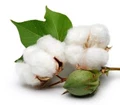
The Indian Council of Agricultural Research (ICAR) has urged researchers to study yield and techniques in order to increase the production of cotton. The Director-General of ICAR, Trilochan Mohapatra, who presided over a three-day workshop on cotton hybrid technology on Wednesday emphasized cotton production utilizing genetic modification hybrids.
He directed the researchers to create techniques for single-picking, mechanized harvest, high-density planting, and genomics-assisted breeding. T R Sharma, ICAR deputy director general (crop science), highlighted the importance of creating pre-breeding lines for genetic variation as well as the incorporation of product profiles in cotton cultivation.
TNAU Vice-Chancellor V Geethalakshmi also spoke at the event about the crop of cotton and the involvement of hybrid cotton in crop improvement. The event was hosted by the ICAR-All India Coordinated Research Project (AICRP) in cooperation with the Indian Society for Cotton Improvement (ISCI) in Mumbai the Tamil Nadu Agriculture University (TNAU).
Cotton Demand And Shortage
Organically grown demand for cotton from distributors and companies increased substantially in 2020, with an increasing number of companies attempting to make it a major component of their materials and fibers.
Increasing evidence of natural cotton's environmental advantages, as well as the millennial generation's involvement in sustainable growth and purchasing power in the marketplace, are encouraging more companies to set objectives as well as agreements to boost their cotton usage.
Some of these businesses have been providing cotton and also have the plan to raise their purchases, but many are brand new to the fiber.
The major supply contributory factor to the current cotton shortfall is indications of forced labor in Xinjiang, China, which prompted several countries to ban cotton imports from this region. For many years, China seems to have been one of the world's leading producers of cotton, taking account 17 percent of the fiber in the 2018/19 crop production year.
As a direct consequence, industries that previously sourced from China are now looking to other countries, especially India, Turkey, U.S., Kyrgyzstan, and Tajikistan.
















